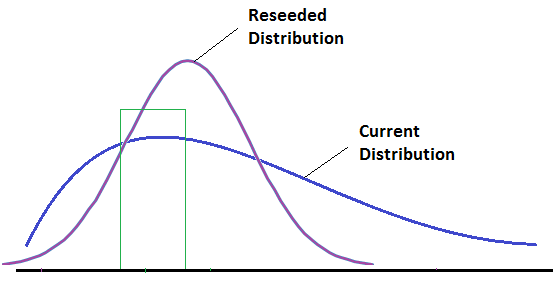Everyone loves a good skin in Paragon and EPIC are doing a pretty exceptional job of delivering them. Although I'd still like to see some Heroes who don't have one, given the special treatment, it's great to see what's new from the team. This week, it's a new skin for Steel. It's pretty much a total rework of the Hero, complete with naked body and a new shield. He looks pretty good but a bit too...rubbery for my taste (his skin, anyway).
As for the MMR reseed, I honestly haven't a clue what this blog post is about. I've read it multiple times and I still can't grasp what EPIC are talking about. Fortunately there's a TL:DR and that states the following:
- Your internal MMR value will change, but you’ll be matched with players in your skill range.
- These changes will allow us to make closer PvP matches.
- The matchmaking server we are developing will make these reseeds less necessary.
That sounds pretty good to me, irrespective of what maths is behind it. You can read the full post below.
We can confirm the rumors; we are doing another matchmaking reseed! This is where we reshape the distribution of our internal PvP matchmaking ratings. It keeps everyone at the same ranking they were but adjusts the magnitude of their ratings to make sure that everyone is able to find fair matches in a reasonable amount of time.
This is going to contain a lot of math talk, so here are the TM:DR (too math: didn’t read) takeaways:
- Your internal MMR value will change, but you’ll be matched with players in your skill range.
- These changes will allow us to make closer PvP matches.
- The matchmaking server we are developing will make these reseeds less necessary.
The shocks to the matchmaking system that come with rapid population growth (a.k.a. PS Plus and Open Beta launch) come with a lot of benefits and some challenges. First and foremost, we are able to remove the floor and ceiling that we have had on our PvP matchmaking algorithm. This was a strategy that we used with a lower player population to make sure that there were enough players at the tails of the skill curve to allow matches to be made in a reasonable amount of time. Allow me to illustrate with some high-tech MS Paint charts.

In a complex system where there are lots of players playing at different frequencies, at different times of day, in different size of groups, etc., it’s difficult for a player skill distribution to remain perfectly normal. High-skilled players who play a LOT will gradually push the tail of the distribution to more and more extreme values.
This is a valid expression of skill, but it is also hard on our current client-based matchmaking system because our matchmaking queue searches expand based on MMR points. That means that it starts searching for people within X MMR points of your MMR. After Y seconds, it searches for players within X+Z MMR points of you and keeps going on and on like that until it finds a match. This could cause players at the extremes of the distribution to wait a long time to find other players in the queue. Sure, we could speed up that expansion function so that it expands faster, but that would also match the middle of the distribution too quickly, meaning we could have found them closer matches if we had taken a few more minutes to do so.
We will be able to self-correct these tails once our matchmaking server is ready, because it will be able to set the search criteria dynamically based on the current queue distribution rather than set MMR point values. In the short term though, adding a floor and ceiling was a way to create small pools of players at the two tails that were able to match with each other in a more reasonable amount of time.
Social parties have further complicated the floor and ceiling strategy. We assign a social party adjustment to groups of players entering the queue together to account for the degree of coordination that friends use while playing together. A group of 5 players who are all queued together are going to tend to play a higher skill level than they would if it was only 4 of them and 1 random person, etc.
With the floor and ceiling in place though, this means that large social parties of above normal skill were encountering solo high skilled players who were searching at the ceiling value who they wouldn’t have run into in the past. While the true social party adjustment value might not have been that high on its own, if it put you near the ceiling, the effective skill difference was too high. Reseeding MMRs and removing the floor and ceiling should allow us to find better matches for social parties of all sizes and put a stronger emphasis on matching up social parties of similar sizes together.

These adjustments are still a short term fix and our MMR distribution could still fluctuate as our player population continues to change, but we are aiming to improve the quality of your matches while we finish developing our matchmaking server. This may cause you to have fewer 30 second queue times, but it should not cause any increase in extremely long queue times. As always, thank you for sticking with us and for keeping our queue populations nice and healthy with all those matches you’re playing!
To read the latest guides, news, and features you can visit our Paragon Game Page.




